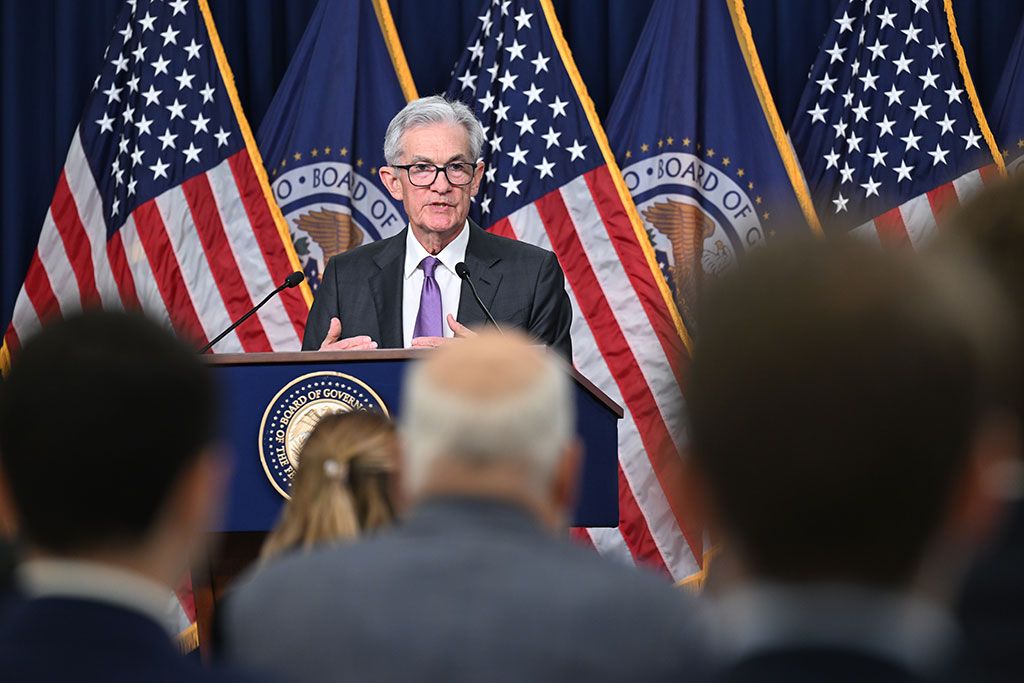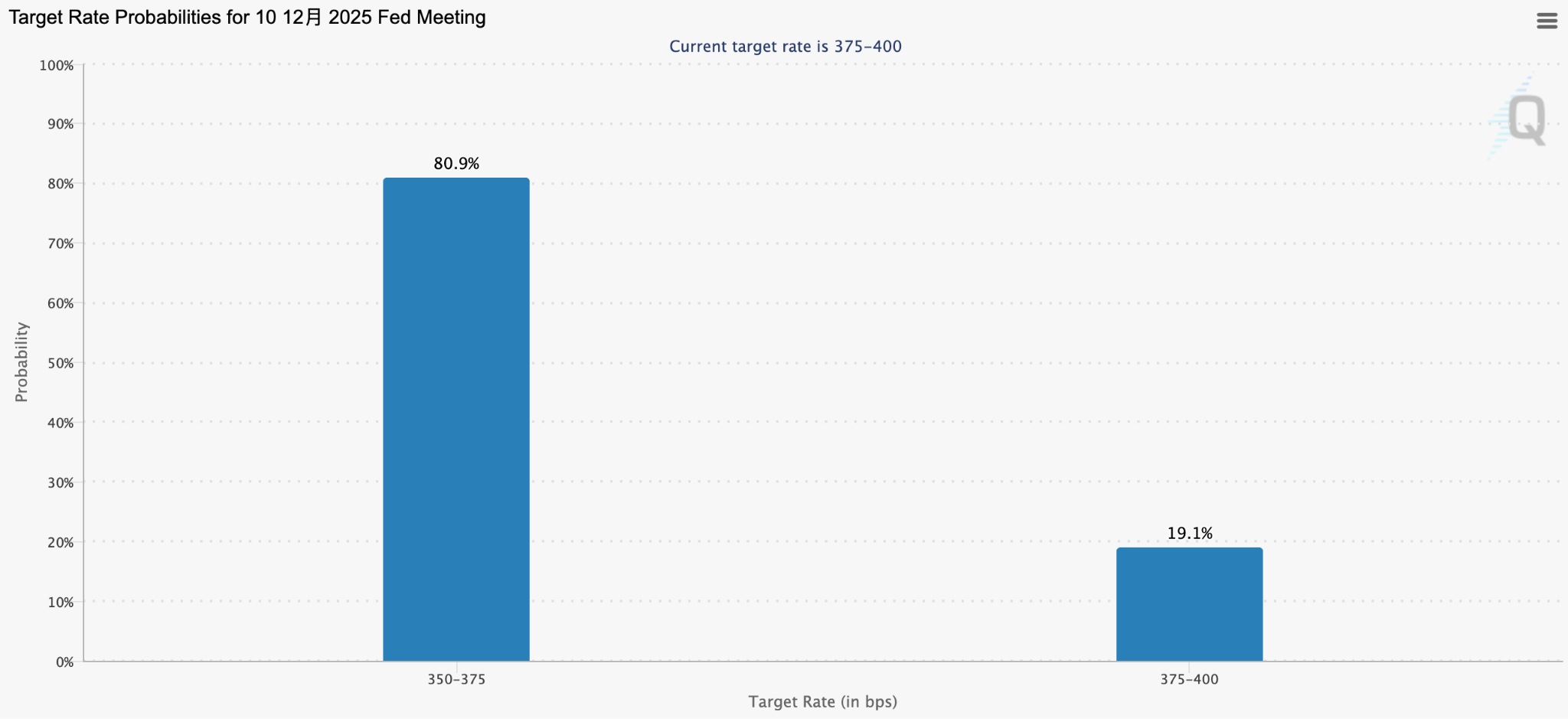Fed Officials Speak Out in Force to Back Rate Cut! December Cut Now a Done Deal? Will the FOMC Meeting Be Delayed?
- Nearly $2 Billion Wiped Out in Crypto Liquidations Amid Brutal Sell-Off
- Gold Price Forecast: XAU/USD declines below $4,050 on USD strength and hawkish Fed comments
- U.S. September Nonfarm Payrolls: Two-Scenario Analysis, Will U.S. Stocks Diverge in Short-Term and Medium-to-Long-Term Trends?
- Gold Price Forecast: XAU/USD edges higher above $4,100 ahead of delayed US September NFP report
- Whale Dump Meets Quantum Panic: Bitcoin Slips to $86,000 and Blows $220 Million Longs
- 2025 Black Friday is coming! Which stocks may see volatility?

TradingKey - San Francisco Federal Reserve President Mary Daly has voiced support for a rate cut at next month's meeting, citing the greater likelihood and harder-to-manage risk of a sudden deterioration in the job market compared to a surge in inflation. New York Fed President John Williams also stated last Friday that there's still "room for further adjustment in the near term... to bring the policy stance closer to a neutral range."
Mary Daly's position rarely deviates from key policy consensus. Her remarks often align closely with core policymakers such as Chair Jerome Powell and Vice Chair Philip Jefferson, making them widely regarded by the market as a "synchronous signal" reflecting the committee's mainstream opinion.
Furthermore, in past cycles of rate hikes and pauses, Mary Daly's statements have often pre-signaled the Federal Reserve's shift toward either a more dovish or hawkish stance, which were subsequently confirmed by Powell's press conferences or the Fed's dot plot projections.
How Likely Is a December Rate Cut?
The table below previews the stances of hawkish and dovish Fed officials:
Name | Title | Policy Stance |
Board of Governors of the Federal Reserve System (All are voting members) | ||
Jerome Powell | Chair | Unclear |
Philip Jefferson | Vice Chair | Unclear |
Michelle Bowman | Governor | Rate Cut |
Michael Barr | Governor | Pause Rate Cuts |
Lisa Cook | Governor | Unclear |
Stephen Miran | Governor | Rate Cut |
Christopher Waller | Governor | Rate Cut |
Regional Federal Reserve Bank Presidents (New York Fed has a permanent vote; other Feds vote on a rotating basis) | ||
John Williams | New York Fed | Rate Cut |
Susan Collins | Boston Fed | Unclear |
Austan Goolsbee | Chicago Fed | Pause Rate Cuts |
Alberto Musalem | St. Louis Fed | Pause Rate Cuts |
Jeffrey Schmid | Kansas City Fed | Pause Rate Cuts |
Even though Board Governor Cook and Federal Reserve Vice Chair Jefferson's policy stances are currently unclear, they have historically leaned dovish.


【Probability of December Rate Cut, Source: CME Group】
Just a week ago, the market was pricing in only a 50% chance of a Fed rate cut. Therefore, to some extent, we can see that even with widening internal Fed divergences, the market is already pricing in a rate cut.
Fed Officials Intensify Calls for Rate Cuts! Is a December Cut All but Certain? Could the FOMC Meeting Be Delayed?
The originally scheduled FOMC meeting on December 9-10 will take place before the release of two crucial employment reports, which are core data points for determining whether to cut rates.
This timing misalignment has led to market discussions about whether the Federal Reserve might delay its December 10 meeting by a week to review key employment data before making a decision.
If the meeting proceeds as scheduled, the market's concern is whether a strong jobs report released after a Fed rate cut could trigger panic in financial markets.
Indeed, if policy moves in the opposite direction of factual data, it could introduce greater uncertainty into financial markets. This is something the Federal Reserve wishes to avoid, making the market's consideration of an FOMC meeting delay more than just speculation.
Historically, delays in FOMC meetings have only occurred under extreme circumstances, such as the impact of hurricanes, the COVID-19 pandemic, and the notable 9/11 attacks. Furthermore, with the exception of 9/11, FOMC delays typically lasted only one day.
Moreover, private non-farm payroll data can provide valuable reference for the market. Powell previously mentioned this during the October rate decision:
Even without new Bureau of Labor Statistics data (which was delayed due to a government shutdown), privately produced labor market indicators and internal Fed research provided sufficient reason to believe the job market was cooling.
Therefore, the possibility of a one-week delay becomes extremely low.
The remarks from Federal Reserve officials indicate a broad market consensus for a high probability of rate cuts, but we still need to closely monitor subsequent emerging indicators.
Read more
* The content presented above, whether from a third party or not, is considered as general advice only. This article should not be construed as containing investment advice, investment recommendations, an offer of or solicitation for any transactions in financial instruments.

